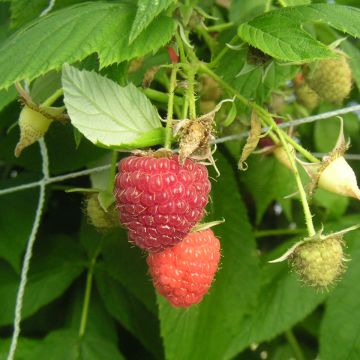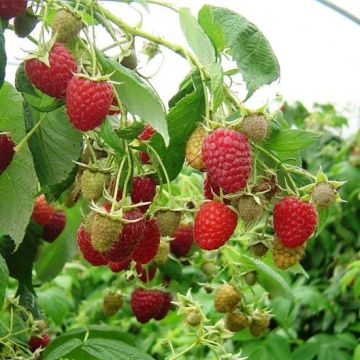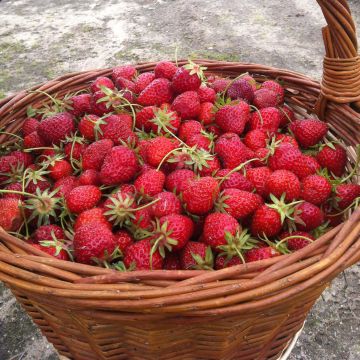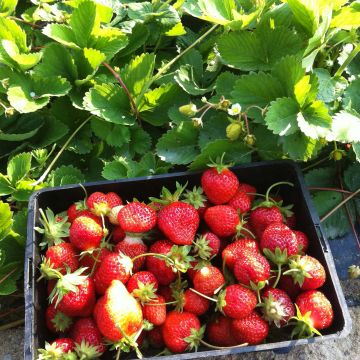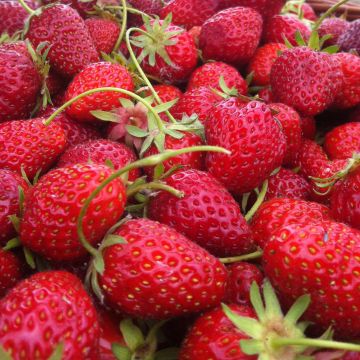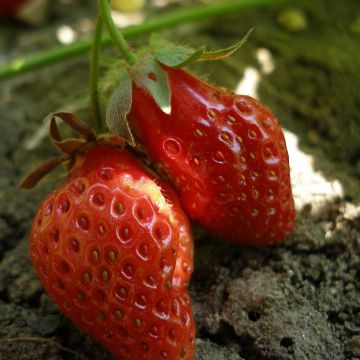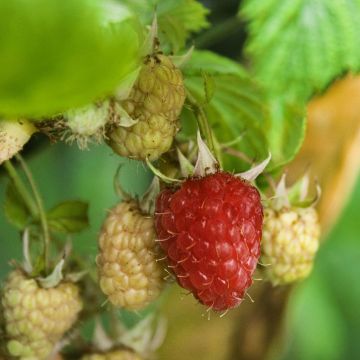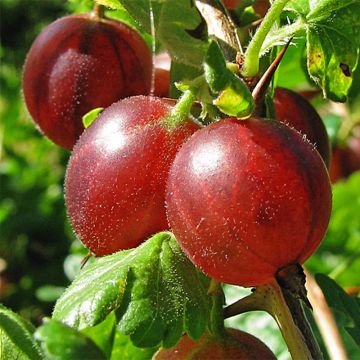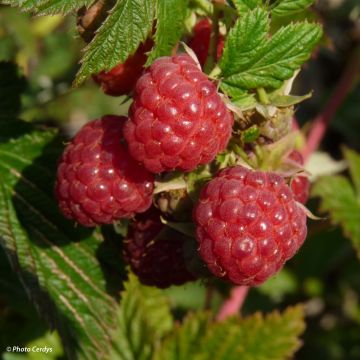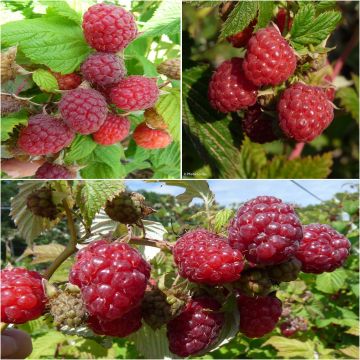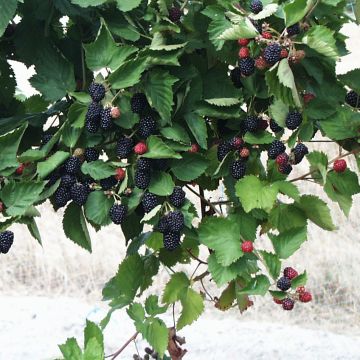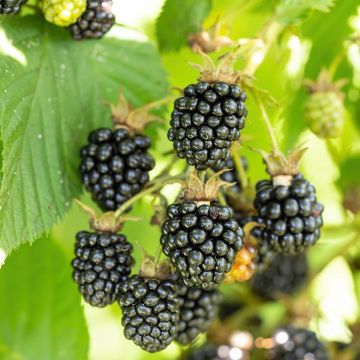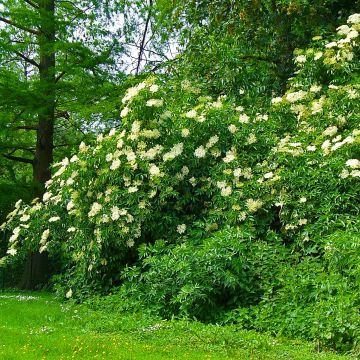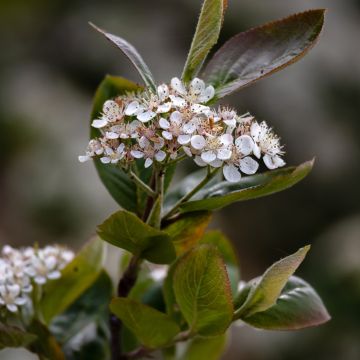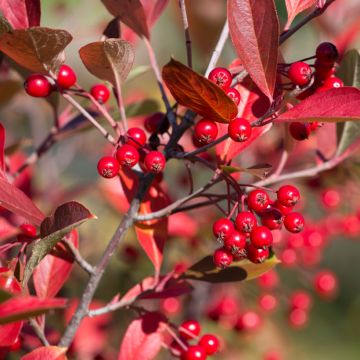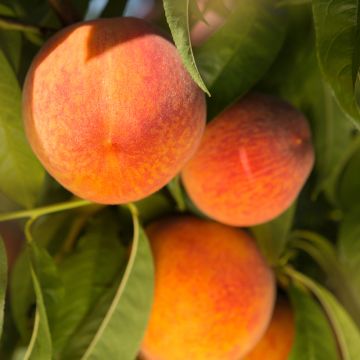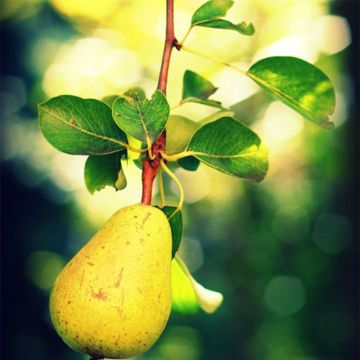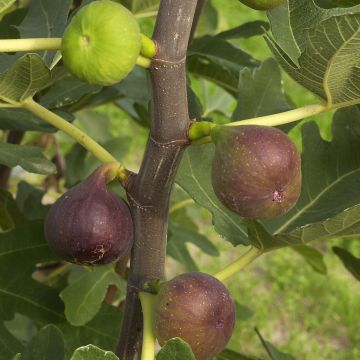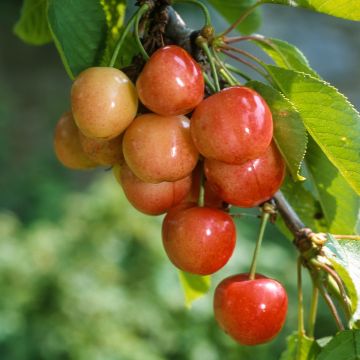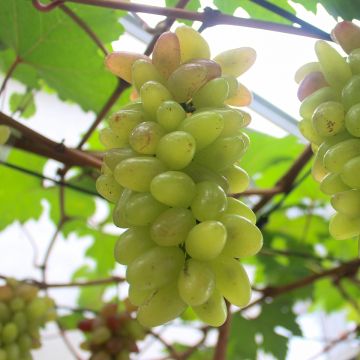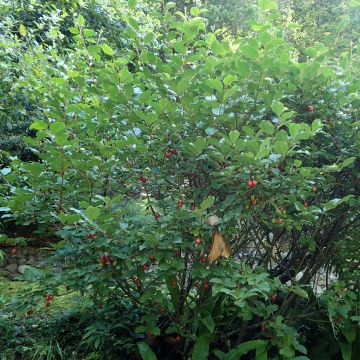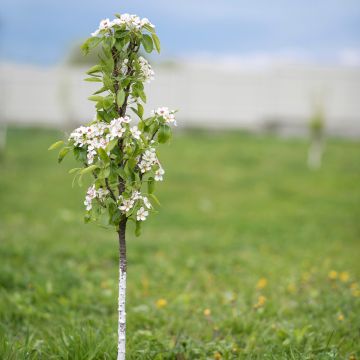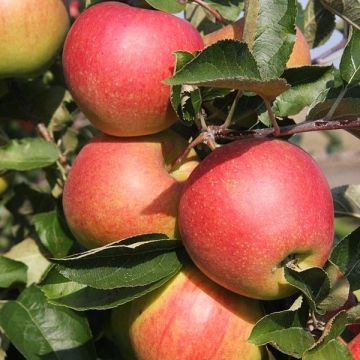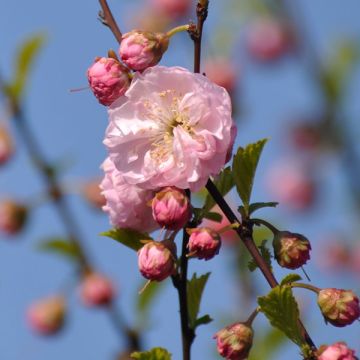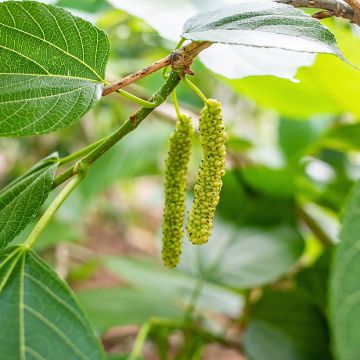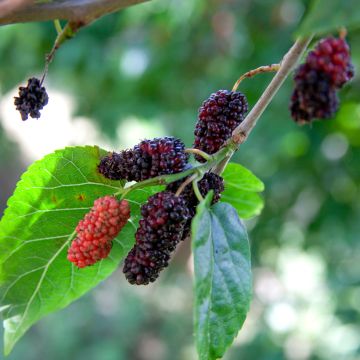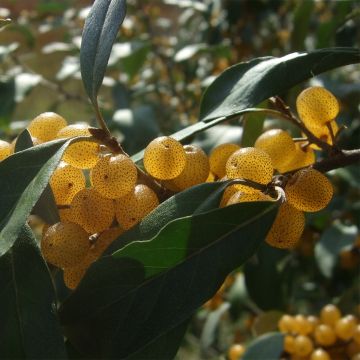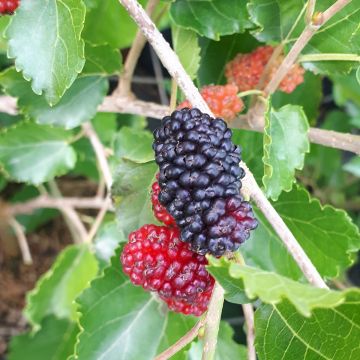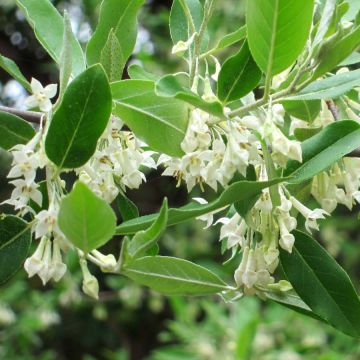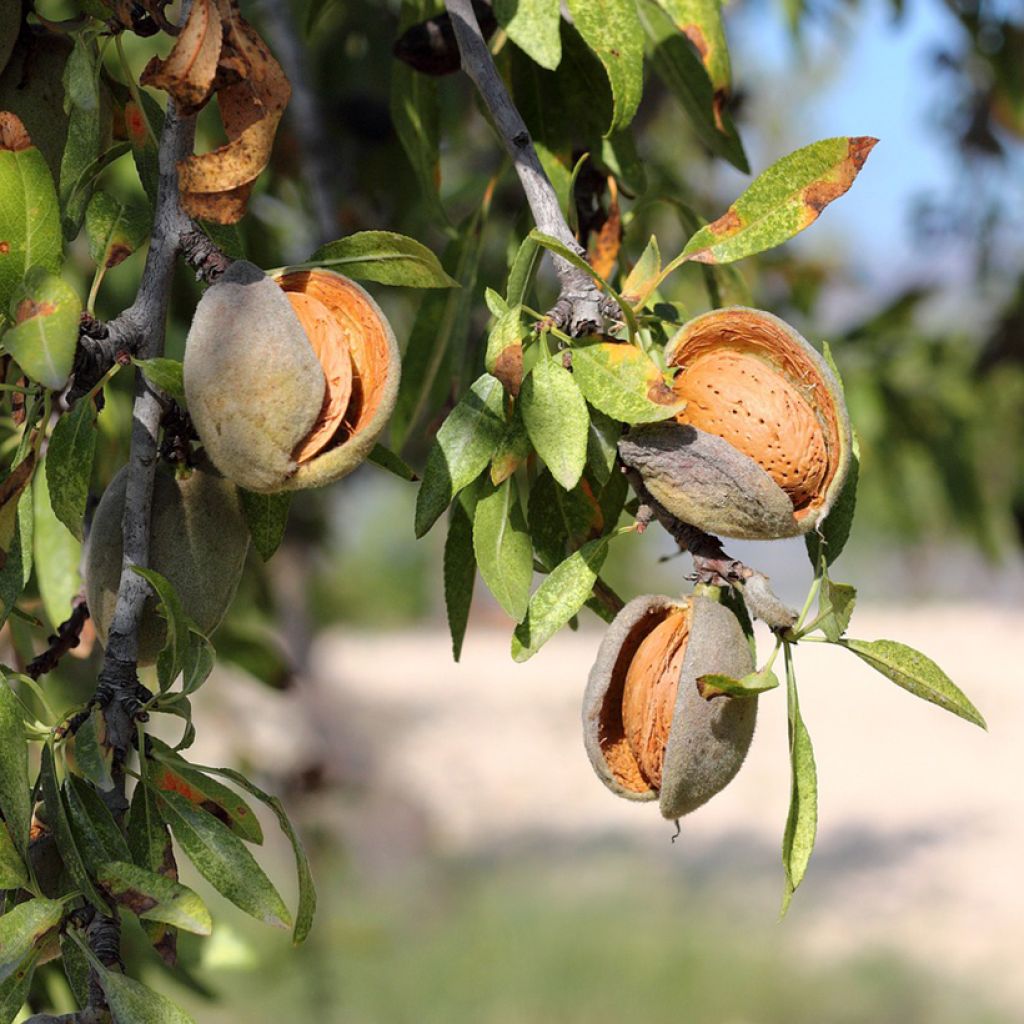

Prunus dulcis Lauranne - Almond Tree
Prunus dulcis Lauranne - Almond Tree
Prunus dulcis 'Avijor' Lauranne®
Almond, Sweet Almond
Why not try an alternative variety in stock?
View all →This plant carries a 6 months recovery warranty
More information
We guarantee the quality of our plants for a full growing cycle, and will replace at our expense any plant that fails to recover under normal climatic and planting conditions.
Oversize package: home delivery by special carrier from €6.90 per order..
Express home delivery from €8.90.
Oversize package: home delivery by special carrier from €6.90 per order..
Express home delivery from €8.90.
Description
The Almond Tree 'Lauranne' is a French self-fertile variety, which means it produces fruit without the need to plant another tree nearby. This variety is also attractive due to its good hardiness and late flowering, which reduces the risk of frost. Easy to grow, it bears fruit quickly and abundantly, regularly from year to year. The hard-shelled fruits are of good quality and suitable for all traditional uses. Ornamental for its beautiful pinkish-white flowering, this small tree is well suited to Mediterranean gardens and can be planted in a much wider area. It is well resistant to drought and calcareous soil, thriving in full sun in well-drained soil.
The cultivated Almond Tree (Prunus dulcis, or Prunus amygdalus) belongs to the vast family of Rosaceae, just like most fruit trees from temperate and Mediterranean zones (Apple Trees, Apricot Trees...), numerous wild plants from the countryside, and countless ornamental plants (Roses, Serviceberries...). The tree is native to the mountains of Afghanistan and Turkestan and was later cultivated in Persia (Iran). Passing through Asia Minor and then Greece, it reached Italy in the 3rd century BC. There are sweet almond trees and bitter almond trees, the latter being toxic.
'Lauranne' is a French variety obtained in 1978 by INRA (National Institute for Agricultural Research, now INRAE), through cross-breeding between the varieties 'Ferragnes' (vigorous and not self-fertile) and 'Tuono' (an ancient Italian variety from Apulia that is self-fertile). The result is particularly interesting, as it combines all the qualities one might hope for in this fruit tree. This variety is therefore less vigorous and better suited to small gardens. With a spreading, slightly trailing habit, its growth is rapid at first but then slows down, resulting in a small deciduous tree of 3.50 to 4.50 m in all directions. The narrow and elongated, lanceolate leaves measure 7 to 10 cm long and are a beautiful medium green, with a slightly glossy upper surface. The tree is self-fertile and can therefore be planted alone, as its flowering will produce fruit. It flowers late, around mid-March, thus reducing the risk of damage from late frost, as at this stage, the flower is very sensitive (it scorches at around -2°C). The single flowers, approximately 3 cm in diameter, are white with a slight pink tinge and rival the beauty of ornamental Rosaceae (Flowering Apples, Flowering Prunus...). After fertilisation, they develop into hard-shelled almonds, covered by a light green husk and of medium size. They can be consumed fresh or, more traditionally, dried, they begin ripening towards the end of September and continue for about a month. Fruit-bearing begins at around three years, and the almond kernels can be used in cooking, for confectionery, nougat, pralines... They have a taste reminiscent of pine nuts with a slight peppery hint.
The Almond Tree 'Lauranne', thanks to its hardiness and late flowering, can be planted beyond the classic Mediterranean zone, in well-drained soil, in full sun and sheltered from the wind. To maintain an exotic touch, plant alongside it a Hardy Fig Tree that will provide you with delicious fruits. Accompany it with the 'Parfianka' Pomegranate, which is also resistant to around -15°C and will reward you with large fruits with few pips, and burgundy juice. To complete your little orchard with southern accents, add a Ziziphus jujuba 'Abundance', a Jujube whose exotic appearance will surprise and whose original fruits you can enjoy in autumn.
Report an error about the product description
Plant habit
Fruit
Flowering
Foliage
Botanical data
Prunus
dulcis
'Avijor' Lauranne®
Rosaceae
Almond, Sweet Almond
Prunus dulcis 'Avijor'
Cultivar or hybrid
Other Fruit trees A to Z
Planting and care
Plant your Almond tree 'Lauranne' in autumn, and if it is a replacement, avoid planting it in the same spot as a previous Almond tree. The almond tree requires well-drained soil, even stony, and it appreciates calcareous soils. Its resistance to summer drought is excellent. In contrast, clay soils that retain moisture are very detrimental to it, as they can lead to the development of a fungus at the roots and the rapid death of the tree. This variety is cold-resistant down to -15°C when planted in well-drained soil and sheltered from cold winter winds.
Pruning is limited to light thinning in winter to encourage the formation of young shoots in spring. Remove any dead wood and crossing branches at that time. You may, in the first 3 or 4 years, be more severe and favour the formation of 4 or 5 scaffolding branches, resulting in a goblet habit, which is traditional in the cultivation of fruit trees. You can harvest your almonds fresh or dry, depending on your taste.
Planting period
Intended location
Care
This item has not been reviewed yet - be the first to leave a review about it.
Mediterranean fruit trees
Haven't found what you were looking for?
Hardiness is the lowest winter temperature a plant can endure without suffering serious damage or even dying. However, hardiness is affected by location (a sheltered area, such as a patio), protection (winter cover) and soil type (hardiness is improved by well-drained soil).

Photo Sharing Terms & Conditions
In order to encourage gardeners to interact and share their experiences, Promesse de fleurs offers various media enabling content to be uploaded onto its Site - in particular via the ‘Photo sharing’ module.
The User agrees to refrain from:
- Posting any content that is illegal, prejudicial, insulting, racist, inciteful to hatred, revisionist, contrary to public decency, that infringes on privacy or on the privacy rights of third parties, in particular the publicity rights of persons and goods, intellectual property rights, or the right to privacy.
- Submitting content on behalf of a third party;
- Impersonate the identity of a third party and/or publish any personal information about a third party;
In general, the User undertakes to refrain from any unethical behaviour.
All Content (in particular text, comments, files, images, photos, videos, creative works, etc.), which may be subject to property or intellectual property rights, image or other private rights, shall remain the property of the User, subject to the limited rights granted by the terms of the licence granted by Promesse de fleurs as stated below. Users are at liberty to publish or not to publish such Content on the Site, notably via the ‘Photo Sharing’ facility, and accept that this Content shall be made public and freely accessible, notably on the Internet.
Users further acknowledge, undertake to have ,and guarantee that they hold all necessary rights and permissions to publish such material on the Site, in particular with regard to the legislation in force pertaining to any privacy, property, intellectual property, image, or contractual rights, or rights of any other nature. By publishing such Content on the Site, Users acknowledge accepting full liability as publishers of the Content within the meaning of the law, and grant Promesse de fleurs, free of charge, an inclusive, worldwide licence for the said Content for the entire duration of its publication, including all reproduction, representation, up/downloading, displaying, performing, transmission, and storage rights.
Users also grant permission for their name to be linked to the Content and accept that this link may not always be made available.
By engaging in posting material, Users consent to their Content becoming automatically accessible on the Internet, in particular on other sites and/or blogs and/or web pages of the Promesse de fleurs site, including in particular social pages and the Promesse de fleurs catalogue.
Users may secure the removal of entrusted content free of charge by issuing a simple request via our contact form.
The flowering period indicated on our website applies to countries and regions located in USDA zone 8 (France, the United Kingdom, Ireland, the Netherlands, etc.)
It will vary according to where you live:
- In zones 9 to 10 (Italy, Spain, Greece, etc.), flowering will occur about 2 to 4 weeks earlier.
- In zones 6 to 7 (Germany, Poland, Slovenia, and lower mountainous regions), flowering will be delayed by 2 to 3 weeks.
- In zone 5 (Central Europe, Scandinavia), blooming will be delayed by 3 to 5 weeks.
In temperate climates, pruning of spring-flowering shrubs (forsythia, spireas, etc.) should be done just after flowering.
Pruning of summer-flowering shrubs (Indian Lilac, Perovskia, etc.) can be done in winter or spring.
In cold regions as well as with frost-sensitive plants, avoid pruning too early when severe frosts may still occur.
The planting period indicated on our website applies to countries and regions located in USDA zone 8 (France, United Kingdom, Ireland, Netherlands).
It will vary according to where you live:
- In Mediterranean zones (Marseille, Madrid, Milan, etc.), autumn and winter are the best planting periods.
- In continental zones (Strasbourg, Munich, Vienna, etc.), delay planting by 2 to 3 weeks in spring and bring it forward by 2 to 4 weeks in autumn.
- In mountainous regions (the Alps, Pyrenees, Carpathians, etc.), it is best to plant in late spring (May-June) or late summer (August-September).
The harvesting period indicated on our website applies to countries and regions in USDA zone 8 (France, England, Ireland, the Netherlands).
In colder areas (Scandinavia, Poland, Austria...) fruit and vegetable harvests are likely to be delayed by 3-4 weeks.
In warmer areas (Italy, Spain, Greece, etc.), harvesting will probably take place earlier, depending on weather conditions.
The sowing periods indicated on our website apply to countries and regions within USDA Zone 8 (France, UK, Ireland, Netherlands).
In colder areas (Scandinavia, Poland, Austria...), delay any outdoor sowing by 3-4 weeks, or sow under glass.
In warmer climes (Italy, Spain, Greece, etc.), bring outdoor sowing forward by a few weeks.

































